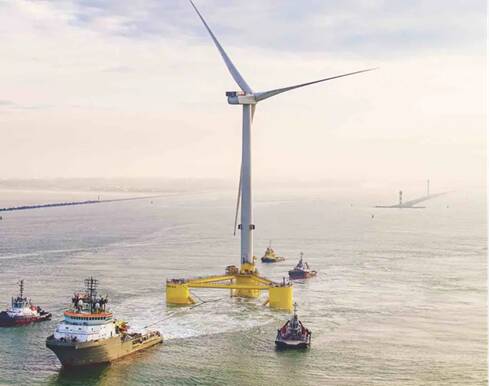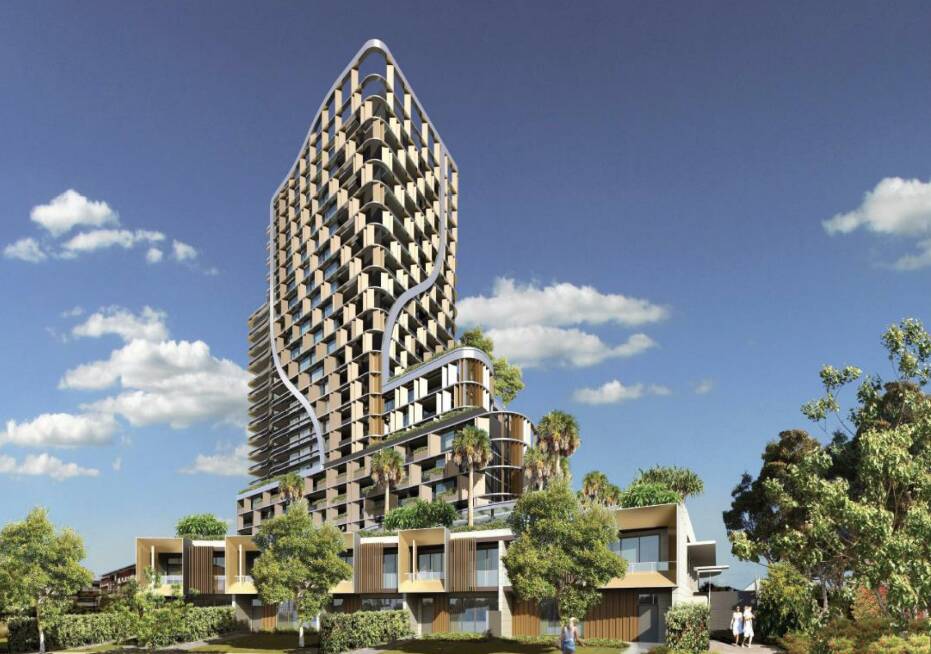
It's not every day a multi-billion-dollar industry pops up in your backyard, but the winds of change (aka offshore wind) have blown straight through Newcastle.
Advocates are calling for Newcastle and the Hunter to seize the offshore wind opportunity with both hands by becoming a manufacturing hub for floating wind farms.
When you look at the numbers, it's easy to understand why they're excited; $10 billion capital expenditure, 3000 direct jobs during peak construction and 200 to 300 permanent local jobs.
Newcastle could be the only place on the East Coast with the unique opportunity to make sure the multi-billion-dollar knock on effect of the offshore industry stays entirely local.
To pull off such a coup, a city would need the following; a deep water harbour (tick), a working port with lots of available space (tick, tick) and a skilled workforce looking to transition into a new industry (tick, tick, tick).
Aside from constructing many of the parts to build and maintain the hundreds of floating windmills off the coast for the Hunter offshore zone, the Newcastle hub could manufacture parts for other developments, like the one off the Illawarra coast.
Of course there are environmental concerns about offshore wind, particularly around Port Stephens, and it's worth noting the Hunter offshore wind zone stretches all the way down to the Central Coast
Without diminishing the legitimate community concerns, I have yet to come across a resource development - be in mines, wind or solar - that hasn't been met with some local resistance.
The Hunter has survived and thrived living alongside coal mines for more than a century. Perhaps we can do the same with offshore wind.

Wyong tower tries again
Significantly altered plans for a controversial hotel tower in Wyong have been re-submitted, after being rejected by the region's planning panel last year.
Mercure has lodged the new $84 million plans for the project, which is the grand jewel in the redevelopment of Kooindah Waters' Resort, with the Central Coast Council.
Three three storeys have been shaved off the development, while the number of hotel rooms and residential apartments have been reduced in response to the concerns raised by the joint Hunter and Central Coast Regional Planning Panel.
In mid-2023, the panel cited more than 20 reasons for the project's rejection.
First and foremost was that the tower had too many residential apartments for a tourism-zoned development.
In the revised plan, the total number of apartments has been reduced by 32, with hotel rooms dropping from 97 to 80 and residential dwellings cut from 98 to 83.
The new development will only be 23-storeys high, instead of 26, to counter the planning panel's concern that the tower was too big for the nearby neighbourhood, which would be "overlooked and overshadowed" by the development.
The panel also claimed it was "out of context" for the Central Coast region in general, with the tallest buildings in nearby Wyong only five storeys and the tallest buildings in Gosford's city centre standing at 15 storeys.
"The proposal is not reflective of the desired future character of the immediate locality and surrounding area," the panel stated.
The resubmitted plans, which are currently on public exhibition, claim to address all the panel's concerns.
Hunter Means Business is a weekly column proudly flying the flag for the region's economic sector. Got a tip? Email jamieson.murphy@newcastleherald.com.au







